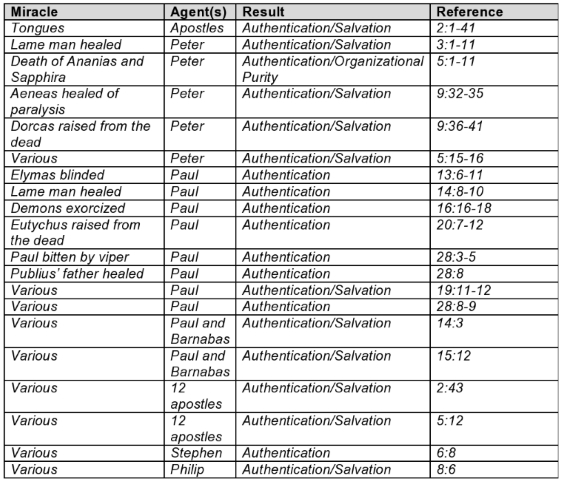|
ACTS: WITNESSES TO THE WORLD
By Steven Charles Ger
|
You will receive power when
the Holy Spirit has come upon you; and you
shall be My witnesses
both in Jerusalem, and in all Judea
and Samaria, and even to the remotest
part of the earth.
~ Acts 1:7-8 ~
|
Every so often, a commentary comes to the attention of the
student of Scripture that strikes him or her as being head and shoulders
above the crowd. Steven Charles Ger's Acts: Witnesses to the World
has struck this editor and AMC's board secretary Mottel Baleston in just
such a way. In fact, as I carefully read through the text for editing
purposes - which includes no change in the text - I find myself engaged
and absorbed not merely as an editor, but as a student. For these
reasons Mottel and I have decided to present Acts in its
entirety - not just for the wealth of information that may be gained
from its study, but, as Mottel stated, as a model for how a Bible study
ought to be done; so be on the lookout for an Acts segment in
each Shofar for many editions to come.
Links to previous increments of Acts:
Witnesses to the World
may be found in our
Library.
To gain the most from this study, it is suggested that the Scripture
portions whose references are provided in the headings be read prior to
considering Steven's comments on them. ~ editor.
~
SECTION ONE:
THE JERUSALEM WITNESS
(ACTS 1:1-8:4)
CHAPTER 2:
THE BIRTH OF THE CHURCH
(ACTS 2:1-47)
THIS INSTALLMENT:
ACTS 2:37-47
Response: Jewish
salvation! (2:37-42)
The response to Peter’s
passionate message was unprecedented. Luke reports that the Temple
crowd was pierced to the heart;
that they were experiencing the throws of severe emotional turmoil.
Their turmoil had been precipitated by their having heard
this, the immediately preceding
referent, Peter’s accusation that they had crucified the Messiah,
God’s anointed One. The crowd earnestly implored Peter to tell them
what they should do, how they might atone for this devastating error
in judgment.
Peter responded with a forceful exhortation, telling the crowd that
there were two things that they must do, two actions that they must
perform in sequence, first one and then the other. First, it was
necessary for the Jewish people to repent.
The Greek word that is translated as repentance is metanoia,
which means “to change one’s mind.” Peter, however, was most likely
not speaking Greek that morning in the Temple, but Hebrew. The
Hebrew word for repentance is shuv, which, although similar
to the Greek, metanoia, indicates an even more dramatic
image, that of completely turning oneself around. Whether drawn from
Hebrew or Greek Scripture, Biblical repentance calls for a vivid
change, a complete reorientation of one’s perspective. In the case
of Peter’s exhortation to his Jewish audience that morning, that
change of perspective, that reorientation, was to be about Jesus.
Despite the crowd’s being pierced to the
heart, the repentance that Peter called for was not
merely an emotional response. Repentance in Acts is not simply
feeling sorrow for sins or experiencing pangs of regret for past
thought or action. This is particularly relevant in this passage.
After all, Luke specified that these men were notably
devout Jews, not
sinners with dubious past
histories chock full of indiscretion. These were pious Jews who
desperately needed to change their minds about whether or not Jesus
was the Messiah. Their prior attitude concerning Jesus was
incorrect, indeed, dead wrong. Now Peter was telling them that they
must adjust their entire belief system to embrace Jesus as the
central facet of God’s plan and program for His people.
Repentance in Acts is the possession of utter confidence that Jesus
is the Messiah. It is only that basic, uncomplicated belief which
results in the forgiveness of sin. This is the sole New Testament
requirement for the salvation of both Jews and Gentiles (Acts 3:19;
5:31; 8:22; 10:43-44; 11:19; 13:24; 17:30; 19:4; 20:21; 26:18-20;
John 3:16, 36; Rom. 11:6; Eph. 2:8-9). That Jesus is God’s exalted
representative, the One authorized to forgive sin, the Messiah, is a
simple, although not simplistic, belief. It is an uncomplicated,
liberating truth that is perceivable to all and receivable by all.
The second required action that Peter enumerated was baptism.
Repentance must immediately be followed by water baptism in the name
of Jesus. Although this water baptism would resemble the customary
Jewish ritual, this was not to be just another basic
repeatable washing as per Jewish custom. Neither was this baptism to
be identified with John’s baptism of repentance, although they
shared certain characteristics.
This baptism would publicize their repentance, their change of mind
and orientation, in the sight of all Israel. Baptism would publicly
identify the penitent with Jesus and all his followers. Baptism
would also serve to publicly disassociate them from the Jewish
leadership that had rejected Jesus. This was the opportunity for new
believers to make their “official pledge of allegiance to Jesus.”
(19) Peter was not calling for a simple,
“every-head-bowed-every-eye-closed-raise-your-hand” type of
response. Rather, he called for the most public of identifications
with the Messiah imaginable. Conveniently, there were multiple
public mikvah pools just outside the Temple where the
baptisms could be performed, that very day!
The grammatical construction of Acts 2:38 is complicated and has led
to differences of opinion as to the connection between water baptism
and the forgiveness of sin. The specific question is which of
Peter’s two exhortations, to repent
or to be baptized, is
linked to the forgiveness of sin. (20) The issue relates to whether
Peter is affirming that water baptism is necessary for the
forgiveness of sins.
There are some who would link the forgiveness of sin to the
exhortation to be baptized. In this view, the Greek word eis,
translated as for, would
indicate that forgiveness of sin was the result of baptism. However,
this would make salvation the result of works. This position is
theologically supported nowhere else in the New Testament and is
contradicted in the numerous passages listed above concerning the
sole New Testament requirement of faith for the salvation of both
Jews and Gentiles. (21)
A second view is that while the exhortation to be baptized is linked
with the forgiveness of sins, the eis should be interpreted
to mean that one is to be baptized because of, or as a result of,
sin having been forgiven. In contrast to the first view, which
places forgiveness of sin as a result of baptism, this
interpretation affirms the reverse, that baptism is a result of
forgiveness. This interpretation is popular in evangelical circles
(22) and is in theological agreement with the passages that teach
salvation by faith alone, not by the “one-two punch” of faith plus
baptism. However, there is scant grammatical evidence for an
interpretation of eis meaning “because of.” (23)
A third view is simply that Acts 2:38 connects baptism with
repentance so intimately as to make the former a reflection of the
latter. In other words, water baptism is a physical action that
reflects and corresponds to the spiritual reality of repentance.
(24) The term eis indicates that forgiveness of sin is the
sole result of repentance. Repentance, however, would necessarily be
reflected in the act of water baptism. Peter, then, was not saying
that the physical act of baptism results in forgiveness of sin, but
rather, that baptism is the closely related physical sign of the
spiritual reality of repentance, which results in forgiveness. Thus,
Peter’s teaching parallels John the Baptist’s marked correlation of
baptism with repentance (Matt. 3:11). Although an appealing
interpretation, it is one that is difficult to articulate.
A final, and tentatively superior view, is one which is based upon
the grammatical construction of the verse as well as the theological
testimony of the New Testament concerning salvation by faith alone.
In this interpretation, repentance is linked with the forgiveness of
sin based upon grammatical agreement in both gender and number (both
are second person plural). The eis indicates that forgiveness
of sin is the result of repentance. This makes the command to be
baptized (third person singular) a parenthetical idea. The verse
could then be paraphrased as follows, “Repent for the forgiveness of
your sins, and be baptized.”
In this analysis, the forgiveness of sin, engendered by repentance,
provides the foundational basis for baptism. This avoids both making
forgiveness the result of baptism and the unconventional use of
eis. This view appreciates that, throughout the remainder of
Acts, Peter only associates repentance or belief with the
forgiveness of sin, making no mention of baptism as a condition of
forgiveness (3:19; 5:31; 10:43)
While this is an attractive and theologically sound position, it
must be recognized that a rather convoluted grammatical dance with
the Greek text must be performed to safely arrive at this
destination. (25) The linguistic intricacies of this position,
however, do not
disqualify it from serious consideration and acceptance.
Peter’s invitation asserts that repentance would not only result in
God’s forgiveness of sin but the divine gift of the Holy Spirit. The
Spirit is freely offered by God and liberally granted to all
believers in the Messiah. Note that Peter does not say “gifts” of
the Spirit, for the Spirit Himself is the gift!
This invitation of forgiveness and the gift of the Spirit in
exchange for acceptance of the Messiah extends to many other Jews,
not just those present in the Temple at that moment. He includes
generations of Jews and their children as yet unborn. When Peter
refers to all who are far off,
he could not have been referring to Gentiles; he had not yet arrived
at that conviction (Acts 10:34). Gentile inclusion in the church at
this point is still a good seven years away. Peter’s reference is to
the vast numbers of Jews scattered abroad in the diaspora.
Even so, although God’s promise extends to many Jews, Peter also
indicates that it does not extend to every Jew, specifying only
those Jews whom God has sovereignly chosen,
as many as our God will call to Himself (Acts 2:39).
Peter’s sermon was not yet finished. He continued on to “round two.”
Unfortunately, Luke only summarized the remainder of the message.
The apostle’s concluding exhortation was a call to separation from
the perverse, or “crooked”
generation. The word Peter used to describe that particular
generation of Israel was skolios, from which we derive the
medical condition scoliosis, the curvature of the spine. It means to
be “twisted,” “crooked,” or “perverse.” This is the sole use of this
word in Acts, but Peter applies it in his first epistle to certain
unsavory employers (1 Peter 2:18), and in his gospel, Luke quotes
John the Baptist as promising that the
crooked will become straight and the rough roads smooth
(Luke 3:5; Is. 40:4). Paul echoes Peter’s usage in Acts 2:40,
contrasting the church with the “twisted generation” in which they
lived (Phil. 2:15).
Peter’s point was for his audience to save themselves, not primarily
from the fires of hell and eternal damnation (although that is
implied), but from the excruciating and cataclysmic judgment coming
upon this particular generation of the nation of Israel which had
rejected the Messiah. This divine judgment had been central to the
witness of John the Baptist, who repeatedly warned his audience of
the wrath to come, which would
imminently descend upon Israel (Matt. 3:7). Jesus further clarified
that the coming judgment was to be inflicted upon the specific
generation of Israel which had rejected Him (Luke 11:50-51: Matt
23:35-36) and would result, in part, in the destruction of the
Temple (Matt 24:2).
The Biblical record indicates that a generation had a duration of
forty years. This was the length of time it took for the torch of
the Egyptian Exodus generation to be passed to their children, the
generation raised in the wilderness (Num. 32:13). Approximately
forty
years after John’s initial warnings and the commencement of Jesus’
public ministry, the Romans decimated Jerusalem and completely
demolished the Temple.
It is abundantly apparent that Peter’s message got through to the
crowd. On the day of Pentecost, three thousand Jews responded in
repentance. They were then baptized in the numerous mikvah
pools located at the southern end of the Temple. There are
archaeological estimates of possibly two hundred of these baptismal
pools at the foot of the Temple Mount, of which dozens have already
been uncovered. (26)
What this indicates is that from approximately 10 AM through the
remainder of the day the apostles were engaged in three thousand
baptisms! Although this prolonged exposure to water assuredly
resulted in a great deal of “pruny” flesh, it would not have been as
daunting a task as one might suspect based upon the volume of new
believers. If the twelve apostles divided up the ministry evenly,
then each would have been responsible for two hundred fifty
baptisms. However, if the entire company of one hundred twenty
shared in the ministry, this only leaves a mere twenty-five baptisms
per baptizer!
At this point in church history, this newly revitalized Jesus
movement had experienced an evolutionary breakthrough. Following
Peter’s thirty-minute message, more Jews had responded to Christ
than had throughout the entire duration of Jesus’ own three-year
ministry.
The
First Church (2:42-47)
In this section, Luke reports
that in the early church, the spectacular results of Peter’s
evangelism were followed through with exemplary discipleship and
fellowship. Following their Pentecost experience, these believers
were “enthusiastic” in the original, truest sense of the word, that
of “having god within” or being “possessed by god,” from the Greek
entheos.
Luke is not as concerned with providing specific details (what was
taught, what they prayed, how they ate together, etc.), as he is in
communicating the atmosphere of love and mutual devotion which
characterized the early church. He simply reports that they
continually devoted themselves
to the apostolic teaching and fellowship, koinonia, as
characterized by sharing common meals and praying together.
The content of the apostolic teaching to which they were devoting
themselves was what Jesus had taught the apostles during His time
with them. There was a vast repository of Jesus’ teaching which the
apostles would have shared, called forth from memory with the Holy
Spirit’s enablement.
There is a question as to whether the
breaking of bread refers to the eucharist or the eating
together of actual meals. It is probable that both are in view. The
agape feasts of the early church were real meals that also included
the regular celebration of the eucharist. Then, as now, Jewish
people exhibit fellowship through their eating together. Indeed, in
this particular Jewish Christian home, Bible study is often
characterized by such “fellowship.” As the Mishnah teaches, “without
food, there is no Torah study and without Torah study there is no
food" (Avot 3:17)!
Apparently, the believers still attended formal worship services in
the Temple and synagogue. The definite article precedes the plural
form of the Greek word for prayer, proseuche, which should be
translated, the prayers,
indicating not just the practice of occasional prayer, or a
prayerful state, but rather, their continued participation in the
formal, corporate times of prayer practiced within Judaism. This
will be illustrated in Acts 3:1.
Luke’s report notes that the believers continued experiencing a
sense of awe, most probably motivated by the
many wonders and signs which were
taking place through the apostles.
It is of extreme importance to note that Luke specifies that the
miracles that
characterized the early church were exclusively taking place only
through and by means of the apostles (2:43). Miracles, signs and
wonders were an essential component of apostleship and served as one
means to authenticate their authority. Every one of the
miracles recorded in Acts, without exception, was carried out by an
apostle or a close apostolic associate. This fact should
significantly inform the contemporary church’s expectations (see
Table 9).
Table 9. Signs of an apostle: Miracles in
Acts exclusive to apostles
and apostolic associates (Acts 2:22; 2 Cor 12:12; Rom 15:19)

Luke then related that the early
Jerusalem church was characterized by the sharing of possessions.
This was a display of Biblical “common-ism,” not communism. Members
of the church sold and distributed property from time to time as
other members experienced
need. The early Jerusalem church clearly valued people over
possessions and, at least for a time, modeled the ideal community as
envisaged in the Mosaic command, there
shall be no poor among you (Deut. 15:4). Their behavior
must have been motivated in part by their expectation of the
imminent return of Christ and the establishment of His kingdom. This
was a reasonable way to live for a community of faith that believed
they were living in the last days
and that the current age was drawing to a close.
This behavior was not meant as prescriptive for every church, but
merely as descriptive behavior of the earliest church. Luke’s use of
the imperfect tense of the verb piprasko, “to sell” (Acts
2:45) indicates that what he had described was the previous and not
the current Jerusalem church practice. Such “common-ism” was
apparently a short- lived, localized practice. The remainder of the
Acts narrative fails to record any other local church structured in
this way except that of Jerusalem, and only then within the early
years. Sooner or later, perhaps after a famine or two, the members
of the Jerusalem church ran out of property and possessions to
distribute and became an especially impoverished community (Acts
11:28-29; 24:17; Rom. 15:26; Gal. 2:10).
Luke concludes his description with strong confirmation of the
Jewish character of the early church. First, He made reference to
their faithful Temple attendance. Indeed, as resident Jews of
Jerusalem, it would seem obvious that they would have frequented the
Temple. The Jewish believers attended the Temple for times of
corporate teaching (2:46; 5:12), customary daily prayer (3:1), and
national worship (2:1; 20:16; 21:26).
Second, He reiterated that they habitually ate together, enjoying
each other’s company and carrying on a joyous, ongoing, perpetual
progressive dinner from one home to another. Even today in Israel,
as in other ethnic cultures set around the Mediterranean, very
little happens apart from food. As we say, where you have two Jews
you have at least four plates of food!
Finally, Luke reports that the early church experienced no problems
with the surrounding community. The Jewish community did not yet
feel threatened by the presence of the church in their midst. In
fact, the community responded favorably and added to the membership
of the church. The believers’ zeal for the word of God and love for
one another must have been positively contagious.
No amount of private house meetings and personal evangelism could
account for the level of growth the early church generated. That
level of growth must have been stimulated through public assemblies
of believers. The one place where the church could be publicly and
visibly gathered was at the Temple. Jesus regularly taught in the
area of the Temple called Solomon’s Portico. The early church
evidently carried on that tradition. These informal, open-air
teaching sessions were where many eventual members would have first
heard the apostles’ teaching.
This concludes the first of seven progress reports on the church
that Luke has strewn throughout the narrative (2:47; 6:7; 9:31;
12:24; 16:5; 19:20; 28:30-31).
Conclusion
One must agree with Luke’s
assessment that Pentecost was indeed prophetically fulfilled by
these events (Acts 2:1). The response to the spiritual
manifestations of the morning of Pentecost and Peter’s powerful
message was that three thousand Jewish people came to
faith in their Messiah. While it would be imprudent to suggest that
God employs a “holy calculator,” this account would suggest that
through Pentecost, He had balanced His “Book of Life.” Fifteen
hundred years following God’s capital judgment at Sinai of three
thousand rebellious Israelites, He graciously restored another three
thousand Israelites to eternal life. The Law kills, but the Spirit
gives life (2 Cor. 3:6).
This Temple Mount sequel to the Mount Sinai experience was necessary
because the account recorded in Exodus leaves no doubt that external
experiences - even the most awesome ones such as the miraculous
escape from Egypt and the thunderous voice of God himself shaking Mt
Sinai - ultimately do not change lives. Lives can only be
transformed from the inside out.
Ultimate life change that results in obedience can only be
accomplished by the Lord taking up permanent residence in His
temple. Not the Temple in Jerusalem, which no longer stands, but
that temple which is each one of us frail, imperfect men, women and
children. Individual Jews and Gentiles alike are transformed into a
community of saints by the receipt of a gift – the indwelling Torah.
Pentecost reminds us that God has personally engraved His righteous
standards on our hearts (Jer. 31:31) by His Spirit. He has given His
Spirit to permanently indwell us, enabling immediate and direct
access to the Father. He has provided the perfect Intercessor: a
great high priest, Jesus, the incarnation of Torah (John 1:1).
Unlike Moses or the Levitical priests, this intermediary is no mere
“middleman”; He is the “God-man!” God’s presence was manifest on
Sinai within an ominous and distant cloud. On Pentecost, God gave us
His Spirit so that His presence can be more intimate than the very
air we breathe. We now have the eternal, abiding presence of
Immanuel, God with us.
Finally, mention was made earlier in this chapter of the two
leavened loaves which were customarily presented on Pentecost. These
leavened loaves prophetically prefigured the church, a church that
is composed of two groups, Jews and Gentiles, both of whom are
leavened, sinful and desperately in need of the indwelling Torah,
the Holy Spirit. God dealt with the first loaf in this chapter. It
will take several more chapters before this Jewish loaf will be
ready to accept its counterpart.
~
All scriptures are in the New American
Standard translation unless otherwise noted.
~
STUDY
QUESTIONS
8. What did Peter mean by repentance?
FOOTNOTES
19. Walter C. Kaiser, Jr., Hard
Sayings of the Bible (Downers Grove: InterVarsity, 1997), 514.
20. A thorough discussion of the grammatical interpretive options is
laid out in Lanny Thomas Tanton, “The Gospel and Water Baptism: A Study
of Acts 2:38,” Journal of the Grace Evangelical Society (Grace
Evangelical Society, 3:1, Spring 1990), 27-52. See also Luther B.
McIntyre, Jr., “Baptism and Forgiveness in Acts 2:38,” Bibliotheca
Sacra (Dallas Theological Seminary, 153:609, Jan. 1996), 53-62.
21. F.F. Bruce, The Book of the Acts, revised edition (Grand
Rapids: Eerdmans, 1988), 70.
22. For example, this is the position tentatively set forth by Charles
Ryrie in his Ryrie Study Bible (Chicago: Moody Press, 1978).
23. Daniel B. Wallace, Greek Grammar Beyond the Basics (Grand
Rapids: Zondervan, 1996), 370.
24. F.F. Bruce, The Book of the Acts, revised edition (Grand
Rapids: Eerdmans, 1988), 69-70.
25. Stanley D. Toussaint, “Acts” in John F. Walvoord and Roy B. Zuck,
eds., The Bible Knowledge Commentary: New Testament (Wheaton:
Victor: 1986), 359.
26. Brad H. Young, Paul the Jewish Theologian (Peabody:
Hendrickson, 1997), 55.
|
Steven Charles Ger, Th.M.,
is a fourth generation Jewish believer. In addition to Acts:
Witnesses to the World, his body of work includes a biblical
commentary on Hebrews and co-authorship of The Popular Bible
Prophecy Commentary. He is also a contributing author to
The Gathering
Storm and the Zondervan KJV Commentary: Old Testament.
He is the former host of the weekly radio show, "The Jewish
Heart of
Christianity," and has appeared as a guest expert on both radio
and television. Steven's main work is directing
Sojourner Ministries, an organization dedicated to exploring the
Jewish heart of Christianity.
Steven has led 11 tours to Israel and has done
on-site research in the actual locations found in the Book of
Acts. Autographed
copies of Acts: Witnesses to the World may be purchased
from the Sojourner
Ministries website at
www.sojournerministries.com. |
Return to Home Page
 |




